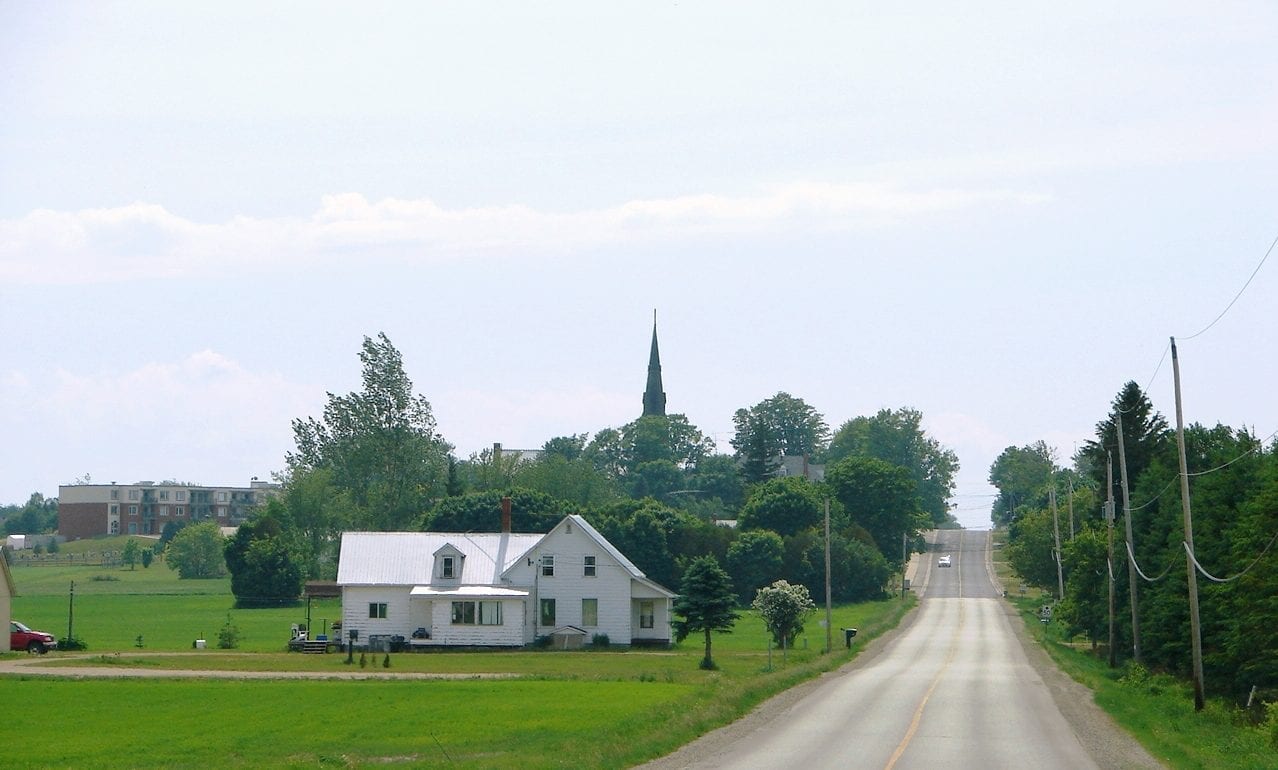Le Festival du loup de Lafontaine – Celebrating Francophone Culture and Roots

Along with Penetanguishene, Midland and Perkinsfield, Lafontaine is part of a Francophone hub whose roots are very old; it is located some 150 kilometers north of Toronto, in the magnificent Huronia region. Lafontaine is known for its amazing pool of professional artists, many of whom take part in the Festival du Loup, which was created in 2002. The event is based, for the most part, on storytelling, singing, and traditional and folk music, but it also welcomes artists from the contemporary pop repertoire, such as the renowned Damien Robitaille, originally from Lafontaine, or from Quebec and other regions in Ontario and Canada. The event takes place in the third weekend of July. The group of volunteers who organizes the festival, La Meute culturelle de Lafontaine (the Lafontaine cultural pack), gets its name from Lafontaine’s legend of the wolf, a remarkable regional work that gives the festival its unique character and features a wolf-howling competition. The Meute also mounts temporary historical exhibits.
For more information…
A community event that has caught on
The first edition of the Festival du Loup was actually a funding activity for a museum project that would pay homage to Lafontaine’s Francophone pioneers. This is why La Meute culturelle de Lafontaine organizes every year a temporary exhibit illustrating the regional Francophone heritage, a sign that they still entertain the hope of opening a permanent museum. However, for the community whose mother tongue is French and which, overall, is very small in the region (slightly over 2,500 people), the Festival du Loup quickly made a name for itself as an important unifying event and a major source of pride, as many professional musicians who live or were born in Lafontaine take part in the festival, such as Jean-Marc Lalonde, Éric Dubeau, Michel Payment, Ariko, Damien Robitaille (who launched his national career at the Festival du Loup) and writers Daniel Marchildon and Suzanne Desrochers who give storytelling performances or make presentations at the Festival.
Today, this well-known event is an opportunity to promote Huronia’s Francophone culture outside the region and keep alive the ties that bind the Francophone population to its maternal language. However, as in any minority community (Francophones here represent 10% of the regional population), the challenge to preserve one’s language and culture is constant. In this regard, the Festival du Loup and the temporary exhibits, including several interpretative activities, which last for one week in November, play a very important role. La Meute culturelle de Lafontaine has also initiated the Contes de Lafontaine project, in partnership with the schools in the region, as well as a storytelling course to enhance the Festival du Loup’s programming and keep alive a tradition of storytelling and a legend that has marked the town of Lafontaine.
Lafontaine’s Legend of the Wolf
The legend tells the story that, in 1902, a wandering wolf was killing sheep, calves and horses, and terrorizing the entire Lafontaine population. However, its inhabitants were divided. After the departure of the French who were visitors in the region in the first half of the 17th century, at the time of the Huron missions, four successive groups colonized the region. The first to arrive in 1828 were former French-Canadian Voyageurs and Métis fur traders. Then, starting in 1840, three waves of immigrants settled in Lafontaine, originating from Lower Canada (now Quebec). The first wave of settlers chose the most fertile tracts of land; the second wave became lumberjacks, in addition to farming the land; and the third wave worked as fishermen and lumberjacks. However, these French-Canadians originating from Batiscan, Joliette and the counties of Vaudreuil and Soulanges were wary of each other and kept to themselves. Yet, according to parish priest Thomas Marchildon of the Ste-Croix de Lafontaine parish (who was also born there and who wrote and published a story about a wolf in 1955), the wild beast was threatening all adults indiscriminately; so, they all joined forces to hunt it down and get rid of it. The wolf allegedly provided all the inhabitants of Lafontaine with an opportunity to join forces and become a real community.
Since then, this true story, which was embellished into a unifying legend, has been repeated a number of times: it was told on television in 1976, summarized in English in 1995, remounted as a play in 1997, republished in its original version in 2007, and converted into a video in 2013. The story is always current in Lafontaine and serves to remind everyone that they must remain united. The legend of the wolf is now part of the cultural heritage and identity of the population of Lafontaine. It is part of Lafontaine’s toponymy as the “Chemin du Loup” (Wolf Road) and it was the inspiration for the creation of the Festival du Loup, as well as for the name of La Meute culturelle de Lafontaine that wishes to perpetuate the unifying impact of this legend.
A small, dynamic Francophone community
Historian Gaétan Gervais identifies the very beautiful region of Lafontaine-Penetanguishene-Midland-Perkinsfieldas the “cradle of French civilization in Ontario” because of a lasting French presence in the first half of the 17th century and its early colonization in the 19th century. In comparison to other Francophone regions in Ontario, the inhabitants of Huronia are nevertheless few in number, even though they are deeply rooted there. The community expresses its vitality through the Le Goût de vivre (a zest for life) newspaper based in Lafontaine, a community radio, a digital portal (www.francohuronie.ca) and La Clef d’la Baie en Huronie, a Francophone cultural association, all three located in Penetanguishene, which, by the way, is a partner of the Festival du Loup. Moreover, Lafontaine and Penetanguishene enjoy the benefit of French schools.





